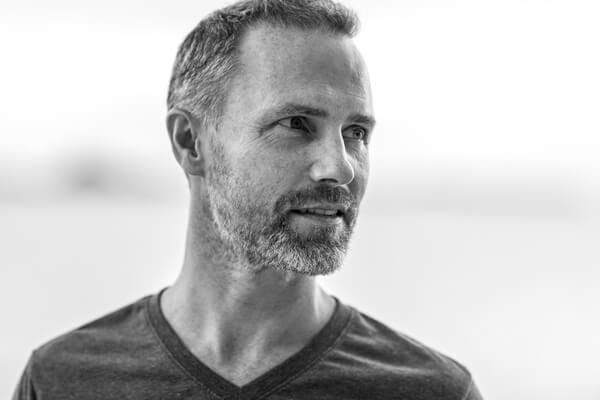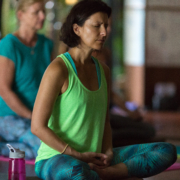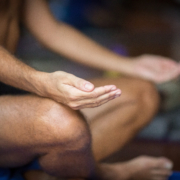 https://samahitaretreat.com/wp-content/uploads/2024/03/DJI_20231220135922_0003_D-scaled.jpg
1920
2560
Kirsten Mia
http://samahitaretreat.com/wp-content/uploads/2024/01/samahita-logo-v2.svg
Kirsten Mia2024-03-20 15:30:592024-03-20 15:30:59Travel, explore, be curious!
https://samahitaretreat.com/wp-content/uploads/2024/03/DJI_20231220135922_0003_D-scaled.jpg
1920
2560
Kirsten Mia
http://samahitaretreat.com/wp-content/uploads/2024/01/samahita-logo-v2.svg
Kirsten Mia2024-03-20 15:30:592024-03-20 15:30:59Travel, explore, be curious!Believe in yourself – or not
Perhaps you’ve heard these phrases, arising in the next best self-help podcast or book, “believe in yourself”, “fake it till you make it”, and more like that. Rather than self-help it becomes self-deceit, delusion, and less than productive, not just for you but for all. And what do they even mean? or represent? Typically a desire to “be” someone, to “get” something, to “be recognized”.
Dangerous stuff.
It’s a fine line. it is important to have confidence in what you know, have worked on, learnt, and continue at. “Faking it till youza making it” and believing in yourself (pound your chest) extend a fickle confidence in what you don’t know, what you haven’t really worked on, what you haven’t learnt, what you may not be continuing much of.
And that’s dangerous because, as history shows, it succeeds in diluting knowledge, perverting justice, and in the so-called leaders who “became someone”, bringing about chaos. And good people pay the price.
The difference lies between what part of the mental framework (aka mind) dominates. Sāmkhya-yoga refers to this as the ‘citta’ with three divisions: buddhi (clear intelligence), ahamkara (ego, self-identification), manas (mind, thought and sensory processes).
“Believing in yourself” requires the last two, a mind of many thoughts with a (strong) sense of self-identification.
Buddhi requires genuine work, effort, engagement. Buddhi is not just a cerebral process but driven by the heart.
The state of many fields of learning, specialty, skill, are polluted and diluted by the non-buddhi approach. Ironically every quick yoga teacher training may describe ‘citta’ and its three aspects in a rudimentary manner, yet exhibit limited learning, lack of understanding, and limited study with irregular practice (from ahamkara and manas) that can only mean teaching material that has not been studied, properly practiced, or understood.
“There are two great tragedies in life, getting what you desire and not getting what you desire. Neither are part of buddhi……”
A good student, temporarily in one of these situations, will get past this because they use their buddhi, revealed in their sincerity, practice, study, and how they learn, reflect to increase understanding, return to practice, and take care of daily living, and seeks out better learning situations. Eventually that tree of learning and genuine work reveals its fruits, whether popularly acknowledged or not, that will at least be of benefit to anyone who comes to learn from this student who has now, after much time, become the teacher.
In other words, ideally your output matches your learning and understanding. Whatever field it is (not limited to just yoga here), if you have learnt a level one well and even teach it, this is buddhi, productive to all. The issue arises when one haphazardly learns a level one, jumps into bits of a level two and a three, and then proceeds to teach a mix of all three levels.
To avoid the dilution of a field of knowledge and delusion to one’s self, teach, advise, put out there what you have worked on and developed, not what you’re still figuring out, or worse, trying to avoid to really just get the (oh so temporary) popularity acknowledgement. At such a cost to the rest of us, when it could be to all our benefit if followed with buddhi, putting in the work, time, patience, diligence, with honesty and integrity. And you can still have fun doing all that if you let go of what you think the outcome should be. Because there will be an outcome. Part of the skill in doing with buddhi is knowing boundaries, saying no, angling your work in a productive direction.
Yoga, meditation (as well as politics, stock trading, and the next “big thing”) suffer from this dilemma. In part because the customer is gullible enough. Someone writes a book or leads a podcast with little behind them but a great mix of words (possibly charismatic) and many well-meaning, even quite educated people, show up, follow, and believe in it. Though intelligent, buddhi-the ability to discern, is lacking.
Yet the genuine teacher imparts a message, though kind and caring, of “go now and do the work yourself”. It takes time. There’s no faking anything. That’s either fraud or delusion. But yes, be confident with what you have learnt and where you’re at. All this is buddhi. Discern what you listen to and from where you get it.
Be clear to put in the effort. That does not require believing in yourself. You only end up believing in a not-yourself, a pumped up ego. Rather, discerning buddhi acknowledges the work done and clearly, from the heart, allows for joy and confidence in that. That is good to share. That is teaching, or whatever the work is, with integrity.
This is both part of, and completely 180º, to the spiritual approach.
Spiritual in part because you approach what needs to be done with a sense of doing it, honestly, with discernment, conscientious of others, focused on the task at hand, which is different than believing in yourself, just clear on what has to be done. Gandhi was clear on what had to be done and kept it up for over 40 years. He didn’t help undo an empire’s rule by walking around (as he literally did) because he believed in himself and faked it till the empire was gone! It was pure buddhi.
Opposite because in your inner life you let go, you trust, you don’t know, you may even believe in a divine entity as ‘not you’ yet ‘all you’. But the spiritual approach requires, demands, to be integrated with being grounded in a lived life, doing what needs to be done. When the attention goes in the mind and heart settle with peace as opposed to an agitated desire to “be” someone, “recognized”, believing in a self-identification that only leads to turbulence. And the tragedy is it could be avoided.
As the great Irish writer, George Bernard Shaw, is quoted as saying, there are two great tragedies in life, getting what you desire and not getting what you desire. Neither are part of buddhi.
In all my studies (that don’t really involve self-help books, though some are good:) of almost every yoga text, there is no advice given that says “believe in yourself”, “fake it”, or “heck, yeah, woo, you got this, damn, mf@#$%*er”, or worse, the made-up, fake “law of attraction”.
But these ancient teachings and modern wisdom do advise
tune it, commit, be regular, do the work, let go.
And along the way it may get awkward and uncomfortable while learning.
Then confidence arises. In time.
Be still, Be that joy.
Then you’ve learned to relax within.
Your contribution grows.
You help more and more.
You do with a sense of knowing, which is confidence embodied, not ego expressed.
All in time.
So keep it up. Go for the long play. In time you will display a knowing and understanding, which is straight from your soul a la buddhi, and good for all.
Here’s to political leaders, business exec’s, public figures, as well as yoga teachers and self-help gurus, taking this on.
Dr. Paul Dallaghan’s expertise with breathwork, body and meditative practices comes from three sources: (1) three decades of daily dedicated practice and teaching these techniques; (2) uniquely acknowledged in the Yoga tradition by the title of “Master Yogi-Prānācharya (expert in breath)”, following an immersion in the original culture through one-on-one direct training in practice and study of ancient texts; (3) a PhD in doctoral scientific research at a leading US university (Emory) covering both the tradition and science of yoga and breath practices in terms of stress, health and aging. As a result, Paul occupies a unique space to impart genuine teaching and science on the breath, body, and meditative practices, seen as a Teacher-of-teachers and identified to carry on the tradition of Pranayama. His sincere and ongoing role is to teach, write and research, to help put out experienced and authentic information on these areas of how we live, breathe and be, to help people improve their mental and physical health, and live more fulfilling lives.
For more on his background see his bio
More from the Samahita Blog









